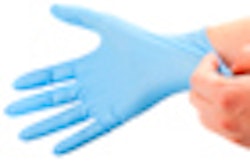
SAN DIEGO - Wearing jewelry under gloves should be prohibited by all dental practices due to risks of tearing, leakage, and microbial cross-contamination, according to research to be presented today at the International Association for Dental Research (IADR) meeting.
While the Centers for Disease Control and Prevention and the World Health Organization only "recommend" that rings be removed under gloves because of the risk of cross-contamination between healthcare workers and patients, the Environmental Protection Agency, U.S. Food and Drug Administration, and the Occupational Safety and Health Administration mandate ring removal, noted the researchers, all from the University of Louisville.
In addition, many dental clinics do not enforce this policy. "Rings may cross-contaminate, tear gloves when donning or when working, impede dexterity, and cause injury working with mechanical or electrical equipment," the study authors noted.
They took microbiological samples from 50 third- and fourth-year dental students working in the university's School of Dentistry clinics, both before and after dental procedures (before and after washing with antimicrobial soap).
The samples were taken of oral streptococci beneath rings (with/without stones, perforations, or sharp edges) and between fingers when wearing nonsterile nitrile exam gloves. Subjects wore two rings on one hand (experimental), with none on the other (control). Rings were then worn on the opposite hand at another session.
The researchers measured microbial contamination (1,600 samples), handedness, and glove tears and leaks. Microbial counts greater than 10 per plate after dilution were considered "significant."
They found that 79.8% of right and 70.5% of left gloves were torn after dental procedures, and that hands with rings had significantly larger leaks than nonringed hands overall (p < 0.0001). In addition, they found significantly more tears and leaks in the glove on the dominant hand (p = 0.006), especially when wearing rings, and rings on the dominant hand were associated with larger leaks (p = 0.005).
More oral streptococci were retained under nitrile gloves when wearing rings while performing dental treatment procedures, than under gloves without rings, even after the postwash (p = 0.04), the researchers noted.
"We find that the evidence is overwhelming in favor of ring removal," they wrote. "Wearing rings with or without embedded stones, perforations, crevices, or sharp edges under nitrile nonsterile exam gloves, while performing dental treatment procedures, resulted in oral streptococcus retention after dental treatment and even after washing after glove removal."
More evidence is needed to demonstrate if wearing rings under examination gloves increases cross-contamination, glove tears, or leaks, they added.



















